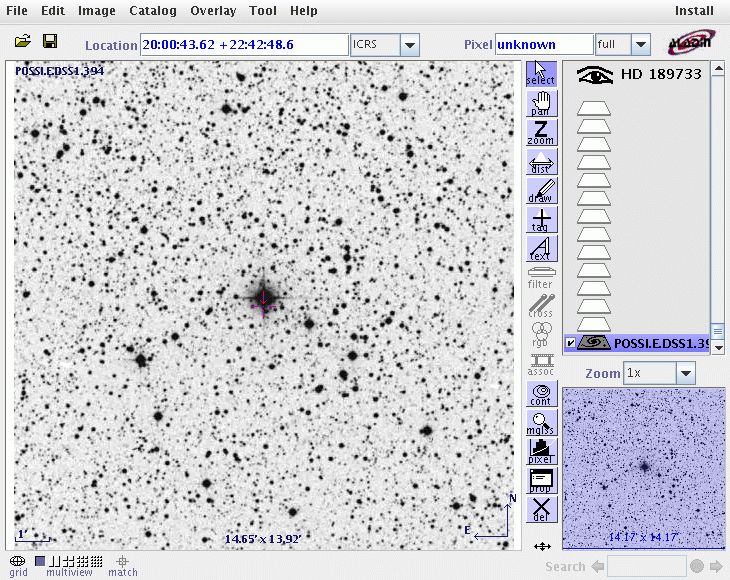
On the night of UT May 01, 2008, the SDSS Photometric Telescope ("PT" for short) took a series of exposures of HD 189733. The results are very noisy, but this first attempt at imaging HD 189733 appears to have caught the egress.
Notes from the night
This is a chart of the field. HD 189733b orbits the is the bright star indicated by the crosshairs.

The host star of HD189733 has a magnitude V=7.67, according to ELODIE metallicity-biased search for transiting Hot Jupiters. II. A very hot Jupiter transiting the bright K star HD 189733.
Following the procedures outlined by Kent Honeycutt's article on inhomogeneous ensemble photometry, I used all stars available in each image to define a reference frame, and measured each star against this frame. You can find the software package used to do the ensemble photometry online; it's free!
The night was okay. The graph below shows the amount by which instrumental magnitudes from each image needed to be shifted to match the ensemble reference. On a clear night, this graph would show a straight horizontal line. I have already removed the first seven images, which suffered from more than 0.10 mag of clouds.
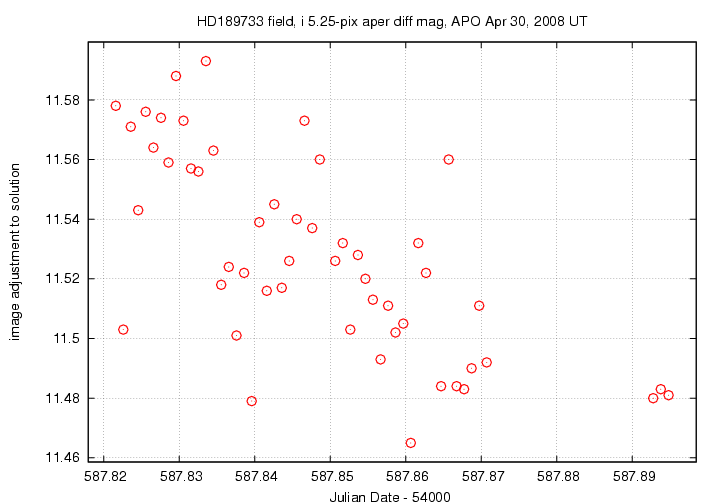
Below is a graph of the scatter in differential magnitude versus magnitude in the ensemble solution.
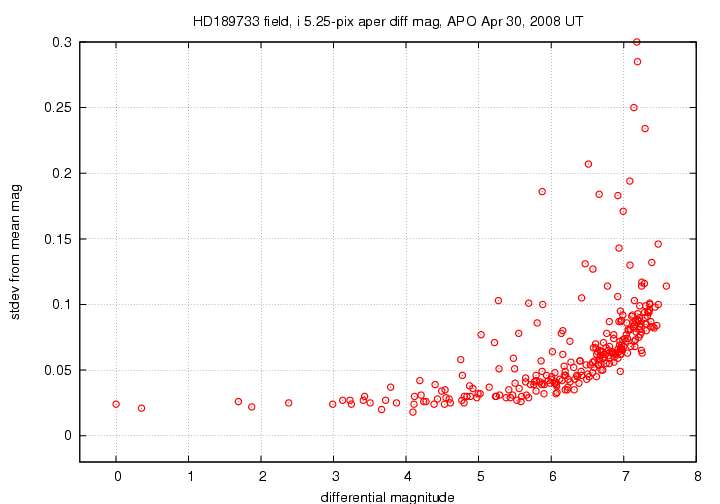
HD189733 is the star at differential mag 0.00. The "noise floor" in these measurements is about 0.025 mag -- which is terrible. We can blame the combination of bad conditions and short exposure times.
Below are the light curves for the target (green symbols) and four comparison stars in the field.
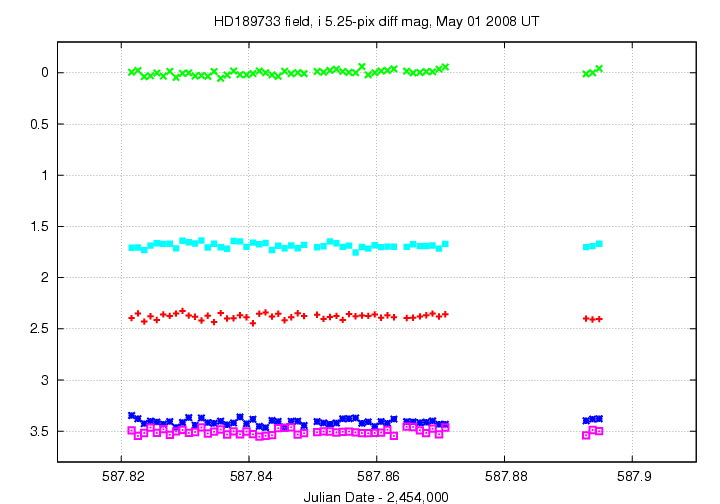
In this closeup, I have shifted the data for two comparison stars to move them closer in magnitude to the target.
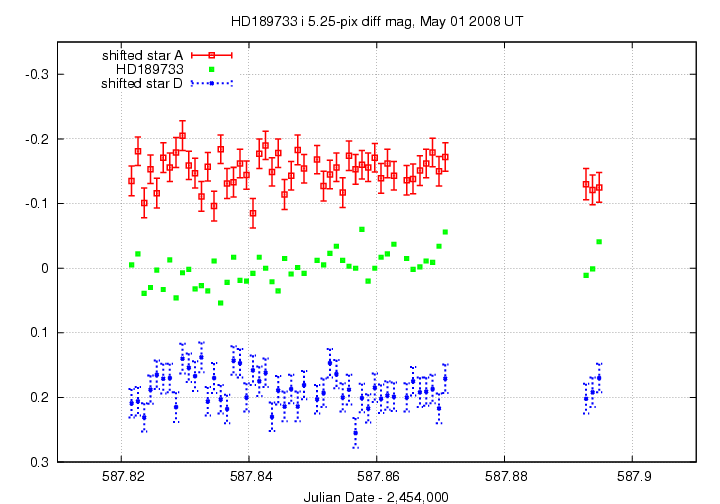
The data is so noisy that I wouldn't claim to make any detection. However, if I had to guess, I'd guess that the ingress took place before we started our observations, and that the egress occurs around 587.85.
The transitsearch.org web site was down when I analyzed this data. Justin's notes on this system suggest an ingress at 587.784, which is earlier than our measurements, and an egress at 587.859, which is close to my guess.
You can grab the measurements for your own analysis. Below is a table with three flavors of time, plus the differential magnitude of the target and an estimate of the uncertainty in each measurement. I show the first few lines of the file to give you an idea of its format.
# Measurements of HD189733 made with APO PT, May 1, 2008 UT. # Each exposure 2 seconds long in SDSS i-band; # Tabulated times are midexposure (FITS header time - half exposure length) # and accurate only to +/- 1 second (??). # 'mag' is a differential magnitude based on ensemble photometry # using a circular aperture of radius 5.25 arcseconds. # # UT day JD-2,450,000 HJD-2,450,000 mag uncert May01.82161 4587.82161 4587.82179 -0.005 0.021 May01.82260 4587.82260 4587.82278 -0.022 0.021 May01.82359 4587.82359 4587.82377 0.039 0.021
Last modified 06/19/2008 by MWR.